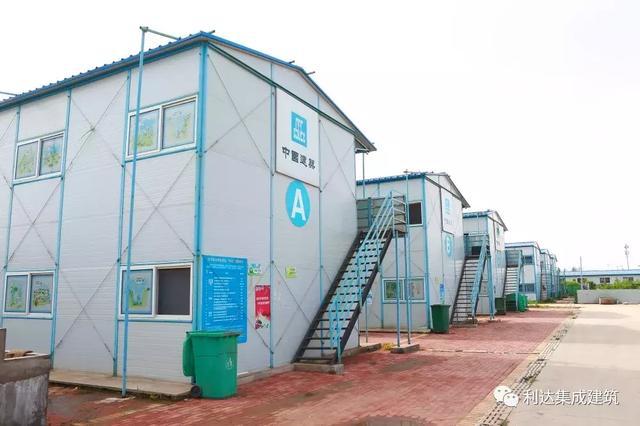Tel: 0086-532-88966982
0086-532-88965892
Website: www.lidajituan.com
E-mail: sales@lidajituan.com
Head office: 5th Floor, Building A, Dalen Center, 180 Haier Road, Qingdao, 266000, China
Prefab Home Supply Chain 2025: Sourcing Reliable Modular House Stock from China
Classification:Company News
Release time:2025-06-19 00:00
Prefab Home Supply Chain 2025: Sourcing Reliable Modular House Stock from China
The global surge in demand for prefab house, prefabricated house, and modular house solutions, particularly within mining, oil & gas, and large-scale constructions, creates critical challenges for project managers. Securing high-quality, timely prefab home stock is no longer just a procurement task—it’s a strategic imperative. As 2025 unfolds amidst persistent supply chain fragility, climate disruptions, and ESG pressures, sourcing reliably from China supplier hubs demands new levels of diligence and partnership. Companies like Lida Group, leveraging decades of experience and vertical integration, demonstrate how to navigate this complex landscape to secure resilient inventory buffers.
Traditional fragmented supply chains struggle in the current environment. Reliance on multiple vendors for raw materials, components, engineering, and assembly creates vulnerability. Geopolitical friction, port congestion, extreme weather events, and volatile shipping costs inject uncertainty. For projects on remote mining sites or time-sensitive oil & gas developments, late module deliveries cause crippling delays. Quality inconsistencies from unvetted factories lead to costly rework or premature failures in harsh conditions. As 2025 demands faster builds to counter labor shortages, securing proven, readily available modular house stock becomes a decisive competitive edge.
Sourcing from China offers compelling advantages—scale, manufacturing maturity, and cost efficiency—but only with the right partner. Discerning clients look beyond price tags to prioritize supply chain resilience. Key pillars define success: Vertically Integrated Manufacturing, Predictable Logistics, Rigorous Quality Control, and Responsive Stock Management. Companies without deep roots and robust processes falter under pressure. Lida Group, founded in 1993 in Weifang, Shandong, exemplifies this stability. Their control over steel structure fabrication, container house conversions, and dedicated prefab house production lines under one roof minimizes external dependencies.

Vertical integration, like Lida’s model, is transformative. Controlling steel cutting, framing, welding, insulation, MEP rough-ins, and finishing internally ensures consistency and shields against material shortages. When steel prices fluctuate or specialized coatings face allocation, integrated suppliers mitigate risks through strategic sourcing and inventory buffers. They compress lead times dramatically – standard prefabricated house modules can move from design to dock-ready in weeks, not months. For clients needing rapid deployment, this agility is invaluable.
Quality assurance isn't an inspection; it’s a process embedded deep within the supply chain. Leading China supplier partners enforce military-grade protocols:
- Material Traceability: Certified steel mill origins, validated coating specs, fire-rated insulation certificates.
- In-Process Checks: Dimensional accuracy via laser scanning, weld integrity via ultrasonic testing, airtightness validation pre-shipping.
- Pre-Shipment Audits: Third-party validation of structural integrity, weatherproofing, and system functionality.
- Digital Documentation: Real-time QA records accessible to clients via project portals.
Lida Group’s ISO-certified factories exemplify this. Their modular house units undergo simulated wind, snow, and seismic loads. Dust-chamber testing ensures seals withstand desert conditions critical for mining camps. Without this cradle-to-grave quality governance, prefab home solutions risk catastrophic field failures far from support.
Supply chain resilience hinges on logistics mastery. Sourcing prefab house stock from China demands expertise far beyond booking container slots:
- Design for Transport: Unit dimensions optimized for high-density container loading, structural reinforcement for multi-modal transit shock.
- Port & Route Diversification: Alternatives to congested hubs; contingency planning for Panama/Suez disruptions.
- Customs Pre-Clearance: Expert handling of HS codes, duty structures, and documentation for constructions materials.
- Remote Site Logistics: Experience coordinating heavy lift equipment, access road surveys, and just-in-time staging.
ESG compliance now permeates the prefab house supply chain. Regulations like the EU’s CBAM scrutinize embedded carbon. Leading China supplier partners proactively address this:
- Carbon Accounting: Measuring emissions from steel production to final delivery.
- Ethical Sourcing: Audits ensuring no forced labor in raw material supply chains.
- Circular Design: Modular house components designed for disassembly and reuse.
- Waste Minimization: Near-zero waste factories via precision manufacturing.
Lida Group invests in EPDs (Environmental Product Declarations) and maximizes recycled steel content, responding to mining and oil & gas ESG mandates for 2025.
True partnership unlocks strategic advantages. Leading suppliers maintain buffer stock of popular prefabricated house designs – core crew quarters, offices, and ablution blocks ready for rapid dispatch. For clients facing unexpected project acceleration or disaster recovery needs, this "ready-to-ship" buffer is a game-changer. Furthermore, digital collaboration tools provide real-time visibility: live factory floor cameras, GPS-tracked shipments, and QA documentation accessible 24/7. This transparency builds trust.
The 2025 prefab home supply chain winner isn’t the cheapest bidder. It’s the partner guaranteeing resilience. Projects demand suppliers who engineer structures and bulletproof sourcing ecosystems. Lida Group’s 30-year evolution from steel structure pioneer to integrated China supplier powerhouse embodies this necessity. Their control from raw material to site assembly mitigates the risks plaguing fragmented models. For global firms operating in capital-intensive, schedule-driven sectors, mastering the China modular sourcing equation means partnering with vertically integrated, quality-obsessed, and logistically agile suppliers. This isn't just procurement; it's strategic infrastructure insurance. Secure your supply chain, secure your project, secure your competitive edge in 2025. Build resilience into your very foundation before the next disruption hits. Choose partners who transform supply chain volatility into mission continuity.
prefab house,china supplier,modular house,lida group
Contact Us
Head Office: 5th Floor,Building A,Darron Center,No.180,Haier Road,Qingdao, 266000,China
Tel: 0086-532-88966982 88965892 Fax:0086-532-88965571
WhatsApp:+86 13793209022
Mobile/Wechat:+86-15166671720
Email: sales@lidajituan.com Website: www.lidajituan.com
Alternate Website: www.lidamodularhouse.com
Head Office: 5th Floor,Building A,Darron Center,No.180,Haier
Road,Qingdao, 266000,China
Tel: 0086-532-88966982 88965892
Fax:0086-532-88965571
Email: sales@lidajituan.com
Website: www.lidajituan.com
Alternate Websit: www.prefabhousecn.com
Wechat/WhatsApp:+86-13793209022
Copyright(c)2023 All Rights Reserved SEO Business license

